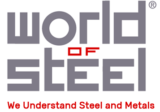Performance of Lacquered Cans
Performance of Lacquered Cans
Many cans today are protected with internal lacquers (sometimes called enamels) and this changes the whole corrosion situation.One of the prime reasons for employing a lacquer coating is to prevent tin dissolution, enabling a lower tin coating mass to be used. Lacquers improve the appearance of the can at the moment of opening; they also allow lower tin coating thicknesses to be adopted. However, this means that a large tin area is no longer freely available as an anodic protective surface, and the integrity of the lacquer coating becomes important for complete protection.For many foodstuffs, the porosity of a lacquer is not important.
However, for aggressive products lacquer helps to protect the can during its life. If the products modify the electrochemical behaviour so that iron is preferentially attacked, then lacquer improves the situation. Care must be taken, however, for if there is a tendency for pitting to occur in a plain, unlacquered can, then a thin lacquer coating can only accentuate this effect.
The question of whether to employ a plain or a lacquered can depends on a number of factors, including the type of product to be packed, the intended shelf life and the wishes and requirements of the consumer.For certain applications some tin dissolution is desirable, both to retain flavour and appearance of a product. In the absence of dissolved tin, some darkening frequently occurs in pale products and changes of colour may become visible in green vegetables. Dissolved tin may also have a perceptible effect on the flavour of many products, sometimes by removal of sulphides, sometimes by suppressing the adverse effects of dissolved iron.
Thus ideally, the canner seeks to reconcile requirements for a good can appearance, dissolved metal contents within acceptable limits and desired appearance and flavour. One approach has been to employ a plain tinplate can body, with lacquered ends; another device consists of the so-called “high tin fillet” which is a fully lacquered can but with a special side seam so sealed with pure tin, that some tin is exposed within the can.
Acidic aggressive products may be protected by a combination of lacquer coatings, for example a roller coating applied to the starting tinplate sheet, a side stripe applied over a side seam and a final overall spray coating. This procedure is usually adopted with beverage cans and containers for beer, whose taste is particularly susceptible to the presence of small amounts of dissolved metal.
- Source: The International Tin Association (formerly ITRI Ltd)
